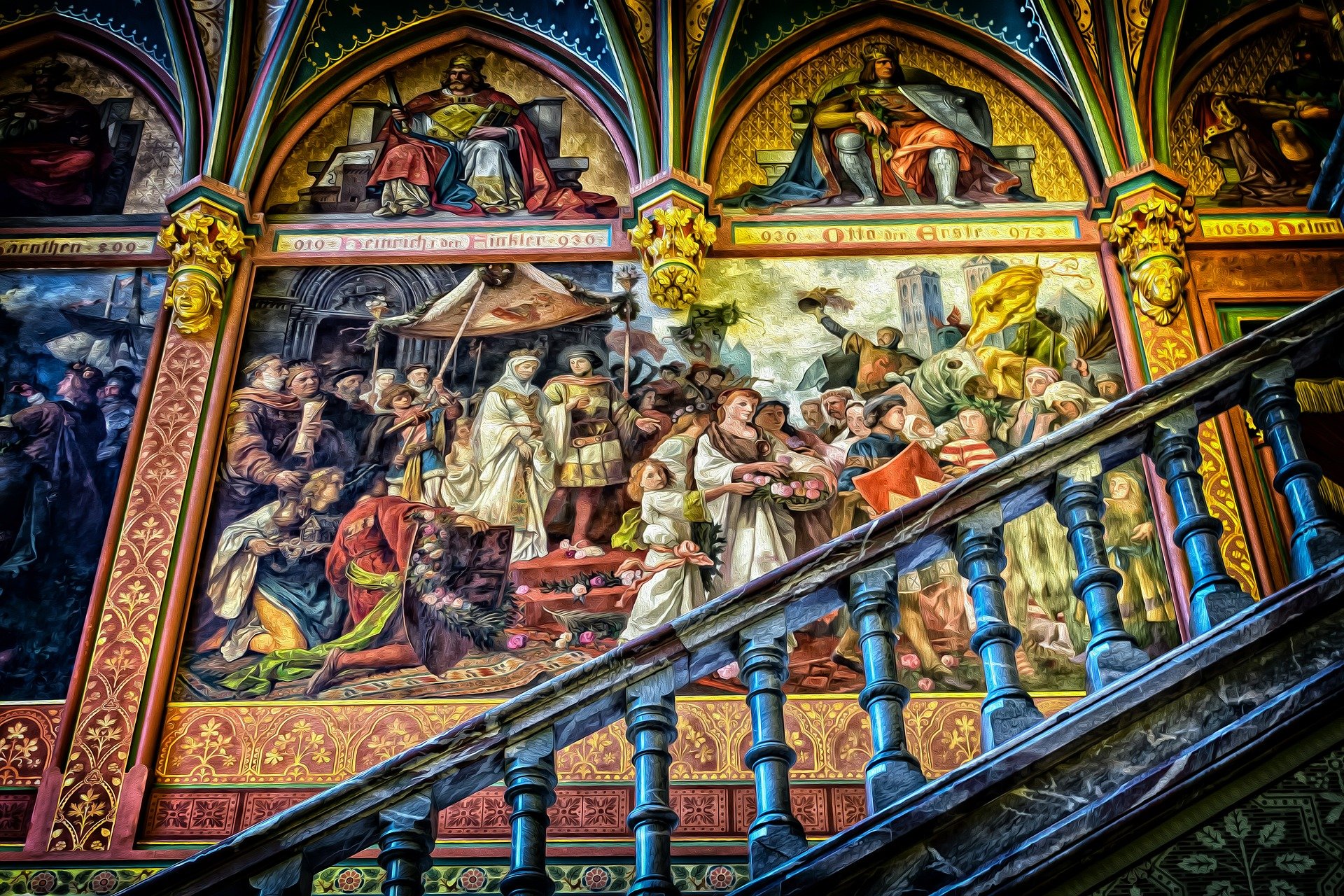
Naryshkin Baroque, also known as Moscow Baroque, is a unique style of architecture that emerged in late 17th-century Russia. Characterized by its flamboyant decorations and vivid color schemes, this style represents a fusion of traditional Russian architectural elements with Western European Baroque influences. It became prominent during a period of cultural flourishing in Russia, under the patronage of the Naryshkin family, and remains a significant aspect of Russia’s architectural heritage.
Origins and Development
The style originated during the late 17th century in Moscow, under the influence of the Naryshkin family, particularly during the reign of Tsar Alexei Mikhailovich. It developed as a synthesis of traditional Moscow architecture and Western European Baroque, brought by foreign architects invited to Russia.
The Naryshkin Baroque marked a departure from the more austere styles of earlier periods, introducing a new era of decorative richness and spatial dynamics in Russian architecture. There are a number of artistic styles that can be found in the city of Moscow and one of the most iconic is Naryshkin baroque.
This style is very much a fusion of traditional Russian architecture with baroque elements imported from Central Europe. This is in reality what makes the city so great, and it is the fusion and the combination fo styles which exist here that really make Moscow what it is.
To help you to understand exactly what this artistic style is all about we are going to take a look at a number of details that will give you a better understanding of how this particular artistic style is brought about.
Style
Naryshkin Baroque is distinguished by its dynamic compositions, vibrant color contrasts, and elaborate decorations. Key features include the use of kokoshniks (arched decorative elements resembling traditional Russian headdresses), intricate brickwork, and extensive use of white stone with red brick.
These elements combine to create visually striking facades, often complemented by ornate window frames, gilded stucco, and iconographic details that reflect the religious and cultural themes of the era.
The main feature of this particular artistic style is pragmatism and that comes from the basic red brick design which is combined with white limestone to bring the color of the brick to the fore.
Structures of this kind of style are unlike anything else that you would find in Russia, which at the time was described as being ‘under the bell’ or ‘under the ring’. These phrases were used to refer to churches that had the bell tower placed at the top of the volume of the building.
Examples
Iconic examples of Naryshkin Baroque include the Church of the Intercession at Fili, the Church of the Sign in Dubrovitsy, and the Church of St. Nicholas in Khamovniki. These buildings showcase the style’s characteristic features, such as vibrant façades, ornamental brickwork, and the use of kokoshniks for decorative emphasis. They stand as testaments to the artistic creativity and architectural innovation of the Naryshkin Baroque period.
Some other examples of this tall, spired design with those iconic hexagonal windows and inlets are as follows:
-
Church of the Savior in Ubory
-
Saratov Holy Trinity Cathedral
-
Church of the Sign of the Blessed Virgin on Sheremetev Courtyard
-
Church of the Holy Apostles Peter and Paul in Petrovsko-Razumovsky
-
Church of the Assumption of the Holy Virgin on Pokrovka
All of these examples feature the Naryshkin baroque style.
Architects
While sharing the grandeur and dynamism of European Baroque, Naryshkin Baroque incorporates distinct Russian elements, setting it apart from its Western counterparts. Its use of traditional Russian motifs and Orthodox Christian iconography, integrated with the theatricality and ornamentation of the Baroque, reflects a unique cultural synthesis.
Comparing it with Italian or Dutch Baroque reveals both the shared baroque sensibilities and the unique adaptations that define its place in the global architectural landscape.
Some notable architects have pushed forward this movement and were champions of this particular design. People such as Yakov Bukhvostov and Pyotr Potapov are fantastic examples of those who used this design and they both designed many of the examples which we have given above.
Cultural and Historical Significance
Naryshkin Baroque played a crucial role in the evolution of Russian cultural identity, symbolizing a period of openness to Western influences and internal innovation. It contributed to the broader narrative of Russian architecture, influencing subsequent styles and movements. The preservation and restoration of these architectural masterpieces are vital for understanding Russia’s historical and cultural legacy, demonstrating the style’s enduring significance.
Last Travel Gem
Naryshkin Baroque is a distinctive architectural style that embodies a significant phase in Russia’s cultural and architectural history. Its vibrant designs and innovative use of traditional and baroque elements not only enriched the Russian architectural landscape but also contributed to the broader narrative of Baroque architecture worldwide. Its legacy continues to captivate architects, historians, and the public, underscoring its importance in the architectural heritage of Russia and beyond.
